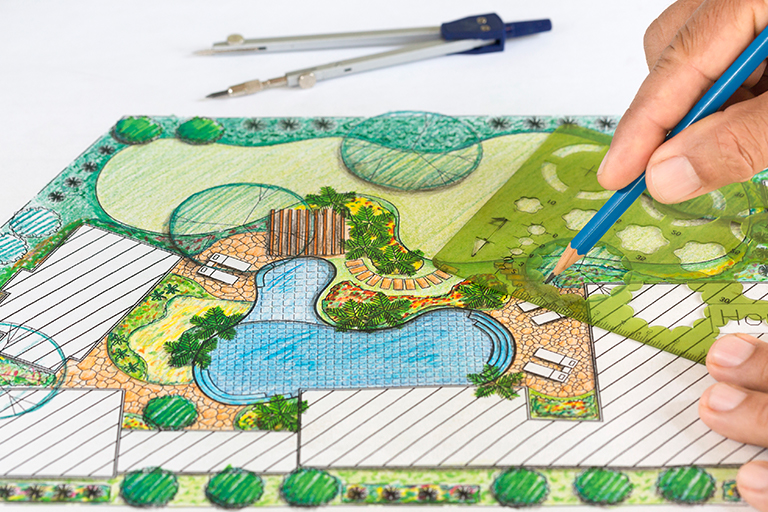By Vicki Spencer, Master Gardener
This past year when I moved back into an old house, I was faced with a new challenge. Not only did the interior of the house need a complete makeover, so did the yard. Everything — trees, lawn, flowers — was dead. I bought old houses before and was accustomed to reviving aging lawns and gardens. But for the first time, I was working with a blank slate. Since money was tight, I didn’t hire a landscape designer. In retrospect, I wish I did a few things differently.
If you want to avoid landscape design mistakes and can’t hire an expert, it’s important to take time to develop a plan. First, think about how you want to use your yard. Some things to consider are whether you want a play area for kids or pets, whether you want a patio gathering place and whether you want a flower or vegetable garden. Sit outside and imagine your family and friends interacting in the spaces around your house.
Consider local weather patterns. For instance, how will sun and wind patterns impact a deck area? If your future gathering spot will be located on the west side of the house, it will get lots of afternoon sun. How will you be able to provide enough shade to make it enjoyable? Can you build a pergola, add an awning or plant some trees? If you’re relying solely on trees, avoid future maintenance nightmares by consulting with a garden specialist about fast-growing varieties that don’t produce excessive seeds or berries.
Think twice about building a patio on a windy corner. You may need to make an additional investment to be comfortable at that location. Building a wall for shelter will add additional costs, so perhaps some tall bushes or a trellis would be sufficient to block the wind.
One mistake I made when building my new patio was investing in an expensive project without considering how the climate along the Front Range is so different from the mountains. All the time I lived in Gunnison, I dreamt of evening gatherings with friends around a fire pit. So while my contractor was reconstructing my backyard patio, I asked him to add a second patio with a fire pit. I didn’t consider the milder winters here. Consequently, I haven’t used the fire pit nearly as often as I imagined. It’s something I could easily have done without.
If your house is new and you are anxious to lay sod to prevent dust from blowing around, take some time to think how you might minimize the lawn area with ground cover, shrubbery and border gardens. This is particularly important in our semiarid climate where we are continually under pressure to limit water use.
Once you settle on a basic design that delineates recreation and gathering areas, as well as lawn and garden borders, you are ready to think about what to plant. One important aspect of attractive garden design is to determine what will be the focal point in your yard. In the front, do you want to draw attention to a compelling entranceway? In the back, do you want to entice visitors to wander along a garden path ending in a secluded area where they can rest on a bench surrounded by fragrant flowers? The trees, shrubs, flowers and sculptures you select will be instrumental in drawing one’s eye to the focal point.
Next you should consider scale and color when placing plants. Typically we put large plants in the back of the bed or against the building, but this is not a hard and fast rule. For example, scale and placement may be different in an island garden where larger plants can be placed in the center. Or, you may have an unsightly view that you need to block with some large and dense vegetation. Repetition of color is important because it creates cohesion and provides a dramatic impact, but you may want to use more than one color so as to avoid monotony. You may also want to include plants with varying leaf patterns to provide additional interest.
Although the internet is full of landscaping ideas, I always prefer to wander the neighborhood to see how similar houses are landscaped. Not only do I get good design ideas, but I can also see what plants grow well in the area. Since I take my cell phone with me when going on daily walks, I take pictures of yards and plants that are particularly attractive. At first I worried that people might not like me photographing their houses, but I found it’s a great conversation starter. In addition to meeting new neighbors, it opens the door for sharing plants when we need to thin our gardens.
When beginning a landscaping project, take your time and be patient and flexible. Don’t rush into a project until you get to know both your climate and your yard. Building structures aside, if some garden areas do not turn out as expected, you can always transplant when the season is right.
Gardener Vicki Spencer has an eclectic background in conservation, water, natural resources and more.

